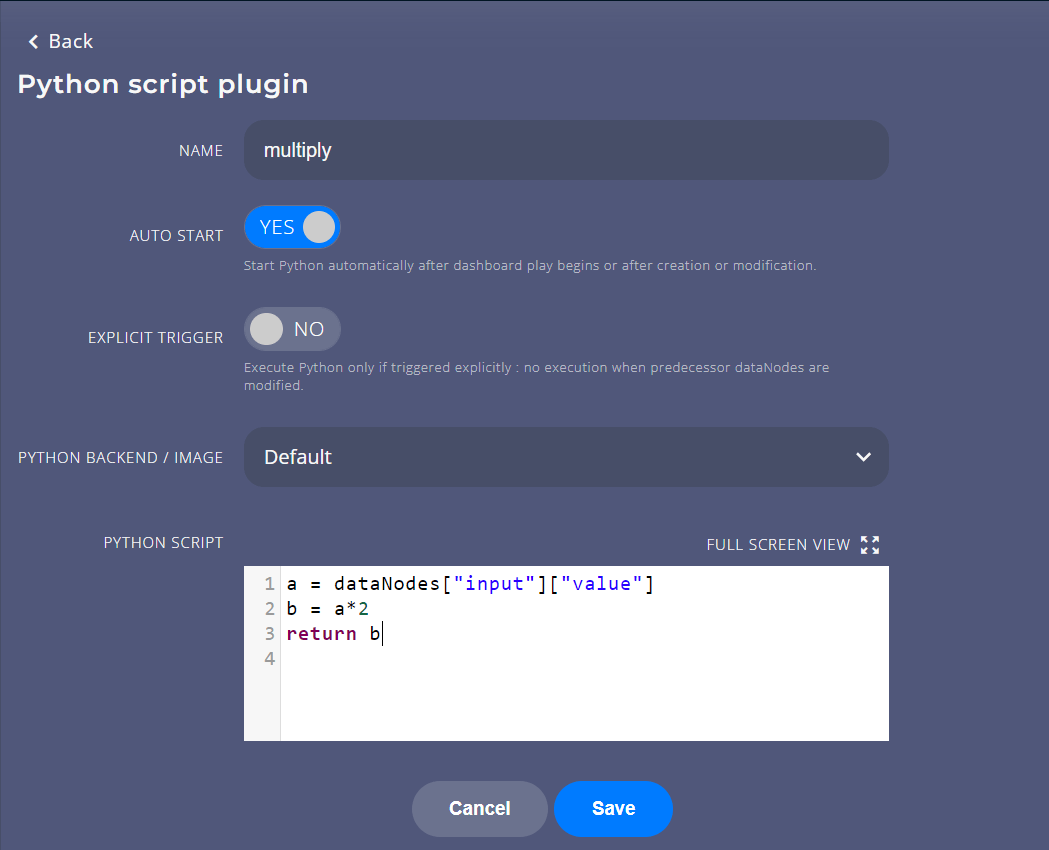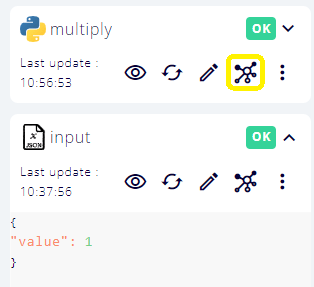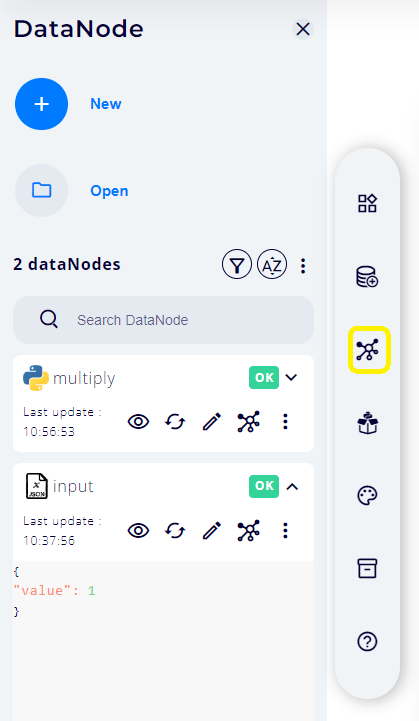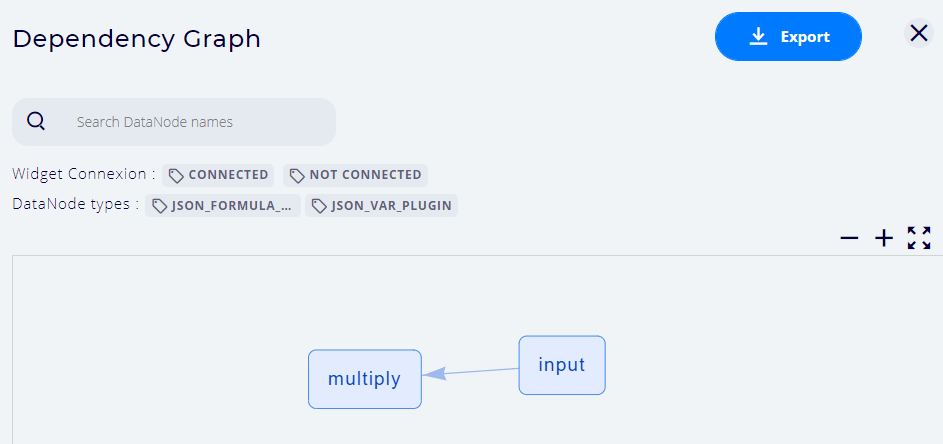Basics¶
Variable¶
Variable is the cornerstone of Chalk'it. With the Variable dataNode type, a JSON, an array or a primitive variable can be manually defined or read from file.
A variable is readable and writable : its value can be modified by a widget. This makes Chalk'it different from other tools that only perform data visualization.

The user can import a JSON variable from a file, export it to a file, or manually edit the parameters using the tree editor located in the lower portion of its edition panel.
Simple example : simple-json.xprjson
Scripts¶
Script-type dataNode is used to write specific Python or JavaScript code that will be executed on the client side. It may use the output of the other dataNodes (referenced using keyword dataNodes). Currently, there types of Script dataNodes exist in Chalk'it :
Below is a screenshot of a Python Script edition panel :

In this example, dataNode multiply references the dataNode input, specifically its property named value. This is specified using the keywords dataNodes["input"]["value"].
A final return statement is required to return the result of the Script evaluation to Chalk'it workspace.
The code is executed according to Chalk'it runtime rules.
Two run mode are available for Python scripts - Using the Default runner that executes locally the Python code into a worker - Using the Pyodide runner that executes the Python code into a webworker runner in the browser
Sequencing¶
- Chalk'it keeps track of a global dependency graph (a Direct Acyclic Graph). This graph specifies both data and execution dependencies between dataNodes.
- When a dataNode output changes, all dependent (i.e. subsequent) dataNodes are automatically re-executed.
A click on the Script dataNode graph icon displays the dependency graph for the formula dataNode.

A click on the graph icon display the complete project graph as shown in the picture below.

This dependency graph above describes the relationships of the dataNodes input and multiply above.
